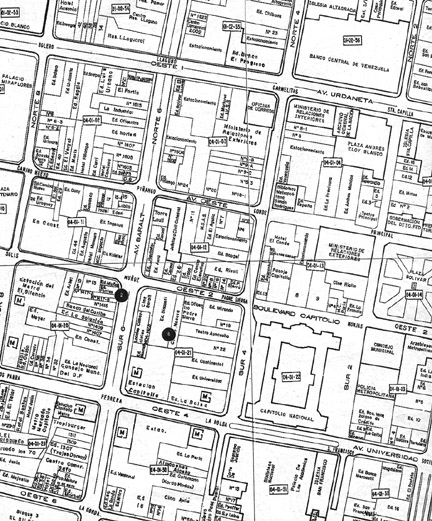
Conducting Consumer Surveys in Caracas
Consumer surveys are based upon samples of selected respondents, rather than censuses of entire populations. A census is prohibitively expensive for the sole purpose of obtaining consumer data, and a properly designed and executed sample survey can provide results with sufficient accuracy. There are many different ways of selecting samples, some good, some not so good and some bad based upon different considerations. Generally speaking, the following objectives are considered desirable:
In a previous article, we provided a description of how to draw a probability sample. The process is divided into a multistage sampling process, such that representativeness is ensured while being variable at each stage. In this article, we will discuss what happens during a particular sampling stage --- namely, the field cluster, which is the sample location at which a group of interviews are conducted.
Typically, the interviewer is provided with a street map of the field location. A random point (e.g. the third house west starting from the southeast corner of a street block) is assigned to each block to indicated where the interviewer should start contacting households. In addition, the interviewer is given a specific path (e.g. traverse the block by going east, then south, then west, then north) to follow in order to complete the assigned number of attempts (or interviews). If the bookkeeping is done correctly, an auditor or supervisor should to able to retrace the steps of the interviewer to verify that the work was performed according to the instructions.

Abstractly, when such a procedure is prescribed, one conjures up the image of square city blocks. It is true that most of the towns founded by the Spaniards in Latin America followed a grid layout, with straight streets crossing one another at ninety-degree right angles. In some cases, these streets are given names that are just sequential numbers (e.g. calle 1, 2, 3 ... in the north-south direction and carrera 1, 2, 3 in the east-west direction). Such towns have a main square, around which the main administrative and religious buildings are situated, and the rest of the town expands outwards following the grid layout. The above map of a section of Caracas (Venezuela) is an example of square city blocks. When such is the case, the standard interviewer's instructions can be executed without ambiguity.
Unfortunately, life is never simple. When the Spanish conquistador Diego de Losada founded the town of Santiago de León de Caracas on July 25, 1567, he envisioned a small provincial town that lied in a narrow east-west valley that was sunny, dry, warm, with refreshing breezes and few mosquitoes. Caracas was not a major Spanish viceroyalty for it had neither mineral wealth nor strategic value at the time. For the first three centuries, Caracas was indeed a small, quiet, provincial outpost. As history would have it, the country of Venezuela came into being with Caracas serving as the capital. Instead of metal gold, Venezuela would be blessed with black gold --- petroleum, and Caracas would grow into a city with millions of inhabitants. In the last 50 years, the population of Caracas had grown from half a million to over four million.
Certainly, part of that growth was accommodated by the many glitzy steel-and-glass modern skyscrapers in the central area. But the narrow valley of Diego de Losada could not be overbuilt to accommodate the exploding residential needs. Buildings began to appear on the hillsides, growing upwards to form entire barrios. Now, instead of the square city blocks, there are serpentine paths following the hillscape and criss-crossing the hillsides. The following map of another area in Caracas is an example of these serpentine paths.
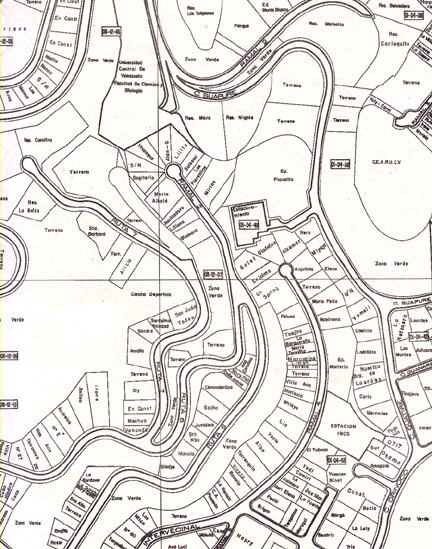
The standard instructions about how to handle square city blocks are not applicable to these serpentine paths. For example, what is the meaning of a street corner? And how can you turn left if there is nothing but a cliff ledge at the end of the road? Of course, this does not mean that probabilility samples are impossible to execute under these circumstances. Rather, we are only making the point that standard procedures have to be adapted to local conditions. It is just that special instructions have to written, and interviewers have to undergo additional training.
In the following, we show some photos that were taken of hillside barrios in Caracas. From a distance, some of these buildings resemble a house of cards, with one stacked on top of another. In most cases, there is no vehicular access to these houses and one must resort to walking up the serpentine paths that weave back and forth, inching upwards ever so slowly.
Elsewhere in Latin America (notably, in Rio de Janeiro), the hillside dwellings are often squatter homes built from cardboards and tin sheets. But it should be clear from these photos that this is not uniformly so in Caracas. Some hillsides are covered with shabby ranchitos that are made of brick and mortar, while other hillsides are bustling with newly constructed modern urbanizaciones.
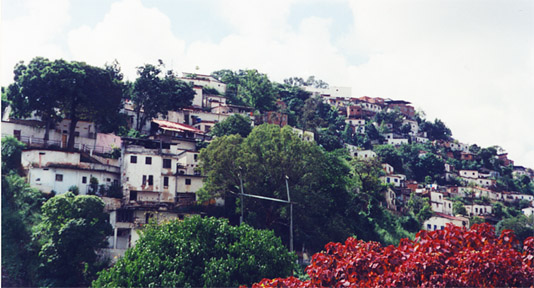
(photo credit: Pablo Verdin)
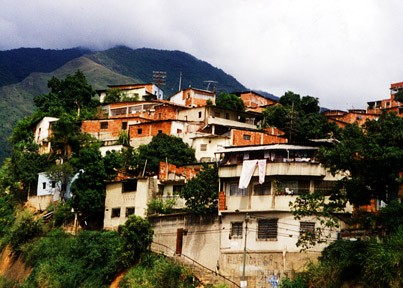
(photo credit: Pablo Verdin)
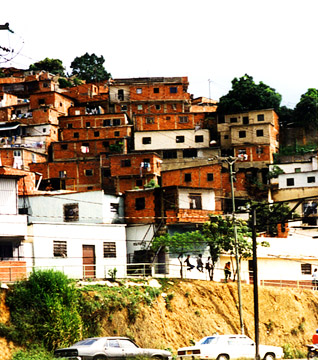
(photo credit: Pablo Verdin)
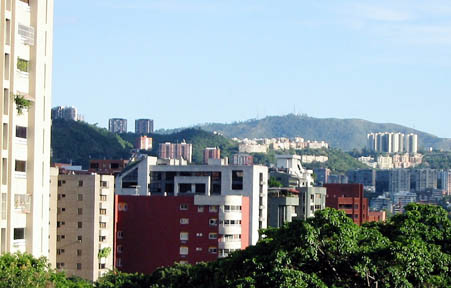
(photo credit: Marcelo Salup)

(photo credit: Marcelo Salup)
(posted by Roland Soong, 9/24/2001)
(Return to Zona Latina's Home Page)